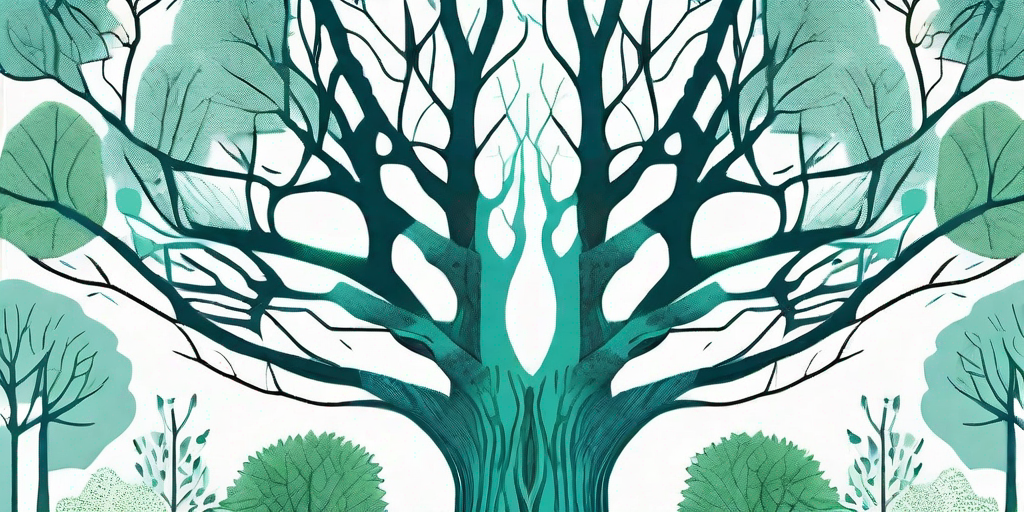
Welcome to the world of Plane Trees, a realm where beauty meets utility, and nature dances in harmony with urban landscapes. These magnificent trees, known scientifically as Platanus, are more than just a pretty face in the botanical world. They are the unsung heroes of urban forestry, silently working to make our cities greener, cleaner, and more beautiful. So, buckle up, tree-huggers and city-dwellers alike, as we embark on a journey to discover the beauty and benefits of Plane Trees.
The Plane Tree: An Introduction
Before we dive into the deep end, let's get acquainted with our subject. The Plane Tree, or Platanus, is a genus of trees native to the Northern Hemisphere. They are known for their stunningly unique bark, which peels away in patches to reveal a mottled trunk of green, tan, and cream. But the Plane Tree is not just a pretty bark; it's a sturdy, resilient tree that thrives in urban environments.
Plane Trees are often found lining city streets, gracing parks, and adorning river banks. They are the silent sentinels of our urban landscapes, providing shade, improving air quality, and adding a touch of nature's beauty to the concrete jungle. Now that we've made our introductions, let's delve into the many benefits of these urban warriors.
The Benefits of Plane Trees
Environmental Benefits
Plane Trees are not just for show; they are hardworking members of our urban ecosystems. They help to improve air quality by absorbing pollutants and releasing oxygen. They also reduce the urban heat island effect by providing shade and cooling the surrounding air. In fact, a mature Plane Tree can absorb as much carbon dioxide as a car emits in a year. Now, that's what we call a breath of fresh air!
But the environmental benefits of Plane Trees don't stop at air quality. They also play a crucial role in stormwater management. Their extensive root systems help to absorb rainwater, reducing runoff and preventing soil erosion. So, the next time you're caught in a downpour, remember to thank the nearest Plane Tree for keeping your feet dry.
Social and Economic Benefits
Plane Trees are not just environmental superheroes; they also contribute to our social and economic well-being. Studies have shown that green spaces, particularly those with trees, can improve mental health and well-being. So, the next time you're feeling stressed, why not take a stroll under the Plane Trees? You might just find your mood improving.
But the benefits don't stop at mental health. Plane Trees can also boost property values. Homes with mature trees are often valued higher than those without. So, if you're looking to sell your property, you might want to consider planting a Plane Tree or two. Not only will you be doing your bit for the environment, but you could also see a return on your investment.
How to Identify a Plane Tree
Now that we've sung the praises of Plane Trees, you might be wondering how to identify one. Well, fear not, dear reader, for we have a handy guide just for you.
- Look at the bark: Plane Trees have a distinctive mottled bark that peels away in patches to reveal a variety of colors, from green and tan to cream and brown.
- Check the leaves: Plane Tree leaves are large, lobed, and resemble a maple leaf. They are usually green on top and paler underneath.
- Examine the fruit: Plane Trees produce small, round fruit that hang in clusters. These fruit, known as 'buttonballs', remain on the tree throughout winter.
FAQs
Are Plane Trees good for wildlife?
Yes, Plane Trees provide food and habitat for a variety of wildlife. Birds, squirrels, and insects can all benefit from these urban oases.
Can I plant a Plane Tree in my backyard?
Yes, but keep in mind that Plane Trees can grow quite large. Make sure you have enough space for the tree to grow and thrive.
Are Plane Trees evergreen or deciduous?
Plane Trees are deciduous, meaning they lose their leaves in the fall and grow new ones in the spring.
Conclusion
So, there you have it, folks. Plane Trees are not just beautiful additions to our urban landscapes; they are hardworking, beneficial members of our cities. They clean our air, cool our streets, boost our property values, and even improve our mental health. So, the next time you pass a Plane Tree, take a moment to appreciate its beauty and its many contributions to our urban ecosystems.
And remember, every tree counts. Whether you're a city planner, a homeowner, or just a tree-loving citizen, you can make a difference. Plant a tree, care for a tree, and help to make our cities greener, cleaner, and more beautiful. After all, we're all in this together.















